
When reading this section, remember that if
addiction was a product of the rational, logical
parts of your brain, there would be no such thing as addiction.
No one chooses slavery. You must negotiate with your inner caveman.
There is a space between suspecting you may have an addiction and deciding that you are going to do something about it.
People, on a regular basis, suspect they may be addicted to some behavior or substance. At such times they may contemplate doing “something” in order to get a handle on things. Typically, they will try to avoid the behavior. I will be using the term “behavior” here to mean both substance addictions, such as addictions to cocaine or alcohol, and behavior addictions. such as addictions to porn or gambling, since the activities of cocaine and alcohol consumption, along with other substances, frequently involve addictive behaviors coupled with tolerance to, and withdrawal from, the substances. As far as the brain is concerned, the addictions all work with the same areas of the brain and involve the same mechanisms and stopping the behavior is always uncomfortable. If it were not uncomfortable, stopping would not be a problem.
The time between suspecting that you have a problem and actually stopping the behavior is the space I want to explore at this point.
Between now and could be
A decision impatiently waits
Sometimes, you have an itch and you scratch it and you feel better, and that’s the end of it. Sometimes, you have an itch and you scratch it, and you feel better for a short while, and then the itch comes back and you scratch it again, and it comes back and you scratch it and your skin becomes sensitive and raw and you scratch it and you start to bleed and your skin becomes a mess. So you realize that you have to stop scratching or your insides will be on the outside. So you stop scratching and you go through an unpleasant period of time of itching a lot and eventually your nerves stop sending itch messages to your brain because that’s the way nerves work. It’s like they become numb or non-functional or exhausted. So, if you have that kind of an itch just stop scratching as soon as possible. You’re going to have to do it sometime, so do it now, before your insides are on the outside.
People who are unfamiliar with addictions and neuroscience have a tendency to think “What’s the problem? If you decide something is not good for you, just stop!” In reality, that is not how our brains work. Asking someone to “Just stop! is like telling someone to “Make your brain work differently!” Making good choices is a part of the solution but by the time someone is addicted, other parts of their brain are strongly involved in making decisions. Addictions reside, for the most part, in the areas of our brains where our basic drives come from. Urges to engage in sexual activity or to act upon hunger by seeking food also reside in these areas of the brain. Most people understand that we are not always wise when it comes to having sex or who we have it with. And when we eat we frequently eat unhealthy foods because they taste good, or when we drink we may possibly drink unsafe water just because we are very thirsty. We all have experience giving in to these drives and engaging in potentially unsafe or problematic behaviors. When a person is addicted they have created an artificial drive which is just as powerful, if not more so, than the drive for sex, food, or thirst and which resides in the exact same areas of the brain and which uses all the same neural pathways as our hardwired drives. To understand how our brains can have different, sometimes conflicting, goals and objectives please see my page The Divided Mind.
I strongly urge that anyone contemplating ending an addiction think long and hard about how they want their life to proceed. Make this evaluation while you are still actively addicted, before you feel the discomfort which comes with cessation. Understand that it is NOT easy. Do a Cost Benefit Analysis and get a feel for how the addiction is impacting your life. Take as much time as you need for this and when you have made your decision, PROCEED.
“If you took a moment to reflect upon how many human beings across all of history have had to live all of their years — their brief stint on this imperfect planet — beneath the weight of disappointment, emptiness and regret, you would look at the opportunities in front of you and you would see them in a new light.
You would take yourself more seriously.
You would realize that perhaps you are not someone held back by true impossibility, but by an unwillingness to be uncomfortable. Held back by the compulsion to seem cool and fit in and to do what has always been done in the way that you have always done it, to slide by on the surface and never touch anything calling to you from just beneath.
You would realize that the stories you tell yourself about why you are stuck and cannot move forward are just that — stories. That anybody who has changed their life in any significant, beautiful way was also confronted with a terrifying, endless unknown through which they had to hold up a torch lit by their own desire and make their way to the other side.
You would realize that you now have to choose what you will hurt for — the pain of the life you might have had, or the pain it takes to start having it. One is an endless suffering masked by a constant pleasure. The other is a more acute discomfort that opens the path to genuine happiness and inner peace.
Then you would realize that there is only one choice.
And you would start running toward the horizon.”
Brianna Weist
If, after evaluating the affects the addiction is having on your life, you decide to stop right then, do so. If that seems to be too radical of a move, then set a date to stop and prime yourself so that you are ready when the date arrives. (See What Worked for Me and What Might Work for You at the bottom third of this page). If you decide to stop, don’t look back. Implement your decision. Every person who has actually given up an addiction will be familiar with the thoughts and actions which follow, and will have experienced the fear and reluctance which accompanies a quit attempt. When you think any of these thoughts, understand that you are thinking them because that primitive part of your brain is hungry and is trying to influence your behavior, but also understand that if you allow this part of your brain to call the shots, you will never end your addiction and all the negative things you wrote down in your Cost Benefit Analysis will continue to be a part of your life, and they will, almost certainly, be worse and will be joined by new horrors which you have yet to imagine:
1. You decide to stop but think some indefinite time in the future is a much better time to stop instead of today.
Caught between quitting
And using, I’m motionless
A fly poops on me
“A year from now you will wish you had started today.” -Karen Lamb
- You are motivated NOW. You have thought long and hard about this decision and have decided to quit, either right now or at some date in the future. If you let this temporary need determine your behavior you will be enslaved forever.
2. You have stopped but think to yourself “I’ll just do the behavior a little (smoke a little, have only one beer, get on the computer and read porn rather than look at hard core porn).
- This “I’ll just give in a little” strategy almost NEVER works. You have trained your brain to look for comfort and satisfaction in the addiction and when you give in “a little” you are just rewarding the same old behavior. You are once again “Feeding the Wolf“, making it stronger and making the dog weaker! You will either NOT do just a little, or you will be much more likely to go back to the behavior in the future. If you feel relief, you are rewarding the behavior. If you do not feel relief, then what’s the point of doing it?
3. I’ve been abstinent for a few days (months, years). I am cured. I can engage in the behavior like a normal person.
- You have trained your brain like you probably trained yourself to ride a bicycle. Thirty years after you have ridden a bicycle, you can get on one and you might be a little rusty, but you will know how to ride it and will shortly be the expert your were thirty years ago.
4. Stopping this behavior is not really that important (or “The behavior’s not that bad”).
- You made your decision already. You thought long and hard about it. The only reason you are having second thoughts is because you are uncomfortable. This discomfort will not last forever. Urges will come for a short while and then subside. See the Cravings section down below on this page for help getting through these urges. Just determine to get through the next hour. Get through today. Each minute that goes by puts you that much closer to the day you don’t think of the addiction at all. It is not that many days away. I promise you.
5. Stopping is too hard. I’ll never be able to do it. I may as well give up now.
- Again, that is your Reptile brain talking. Over half the population has given up some kind of addiction. It is true that some addictions are harder to stop than others, but there are countless people who have successfully ended your specific addiction, whatever it is.
6. I’ve tried to stop before and failed. Why go through all this discomfort when I am doomed to failure.
- You clearly are not doomed. You have learned from past “quit” attempts what to do and what not to do. The fact that your are reading this and are looking at this site is evidence you are making a serious attempt to stop and are open to learning how to stop. This is the last time you will ever have to feel this discomfort.
7. If I stop now, I will not be able to (choose one or more) do my job; maintain my relationship with my kids/wife/husband/significant other; be functional for whatever is coming up in the future.
- If you continue with your addiction, you will almost certainly lose everything that your reptile brain is telling you to worry about losing. It is the nature of addictions that continuing them leads to their becoming more important in our lives, and as they become more important, everything else becomes less important.
8. If I stop now people will be able to see me going through withdrawal and they will know I’m addicted.
- I’m sorry, my friend, but I would be amazed if people did not already know of your addiction, or at the very least, know that something is radically, terribly, wrong. Take control of your life. The time is now.
9. If I stop I could endanger my health.
- If ending your addiction could result in a dangerous health condition, then contact a doctor who understands withdrawal and stop with his oversight.
10. I don’t know which program to go to.
- Get advice from friends. Go to Yelp. Do some research. Do these things before you stop. It’s time to get busy. Despite all the influences that make this process so problematic, it is YOU, your logical, thinking brain, which must take responsibility for your behavior.
11. I don’t have any (or the right) healthcare coverage.
- Many people quit on their own. There are programs who will take you in without requiring that you pay them. There may be somebody in your life who will help you. Get creative. The fact that you face a problem does not mean you are defeated. It means you have something to overcome.
12. I can’t afford to stop as (choose one) treatment is too expensive; I would lose money because I would be unable to work.
- You can’t afford NOT to stop. Whatever you spend stopping is a pittance when compared to the time and money you spend on the addiction.
13. You think about the addictive behavior with longing every once in a while, but you make no conscious decision to use (or do). At some point, without ever really making a decision, you find yourself heading towards that which you have decided you want to avoid.
- This is the most insidious, and yet, the most common scenario. You’re driving down the street, notice a liquor store and pull into the parking lot. You’re not aware of thinking about it, your just doing it. As soon as you become aware of what you are doing, STOP! If you’ve pulled into the parking lot of a liquor, stop yourself and think for five or ten minutes. Do a Cost Benefit Analysis or think about why you want to stop. Take a moment and weigh the consequences. There is no rush to get into the store to buy alcohol or rush into the dealer’s house to cop. Just sit there and take out your Cost Benefit Analysis and look at all the things you hate about the behavior and all the negatives it has brought into your life and everything you are risking by continuing it. If you don’t have it with you, then think about it. You can always read that list (or think about it) and still decide to go in to buy something to drink (smoke, gamble, or whatever). You have not given up some wonderful opportunity. You have given yourself time to make a considered decision and decide with your reasoning brain, what it is you truly want to do.
Some people recommend you give yourself negative reinforcement every time you think about engaging in the addictive behavior. Dr. Albert Ellis, psychologist, has suggested people wear a rubber band around their wrist and immediately after they think about the behavior they pull on the rubber and let it snap back onto their wrist. It doesn’t have to be a big pain, just a slight negative experience is enough. It’s a way of taking control of one’s conditioning.
To see other’s ideas about our ambivalence to stopping go here, here, and here.
From a Facebook post on Sober Janurary, or Sober (insert whatever month it is):
If you have decided the wolf has too much control over your life, that you are, in fact, dependent on a substance or activity that is having an unacceptable negative impact on you, then the next thing you need to decide is what should be done about it. About half of all people who decide to take control over a dependency just stop the behavior. If you’re like me and have struggled for years to end an addiction, you’re thinking “WTF!”. Of the half who struggle to stop, various degrees of effort will be required if progress is to be made towards recovery.
Why are we all so different, you may wonder? We respond differently to exposure to addictive stimuli because of genetics and because of the things which have happened to us in our lives – our individual histories.
Like everything else about us, there is a range in the effectiveness of our neurotransmitter systems. The eight basic neurotransmitters, “serotonin, dopamine, GABA, glutamate, opiate, noradrenergic, endocannabinoid, and acetylcholine” (see Brain In Balance by addictionologist Fred Von Stieff) come into play in various degrees for all of us, and for some of us there is an imbalance which makes us susceptible to addiction. We just don’t get the same bang out of life as others do and as a consequence we are sitting ducks for some substances or experiences which provide that zest for life which we all want, or that peace we have trouble finding.
What are the causes of these variances in dopamine function? Some people feel that genetics plays the major role while others feel prenatal and postnatal development are primarily responsible. There is a growing body of evidence which shows that women who experience high levels of stress during pregnancy will release cortisol, which negatively affects the number and density of dopamine receptors in the brain and has been shown to increase the susceptibility of women to nicotine addiction.
Some of us may have traumatic events in our pasts or troubling occurrences which cause us to use in order to cope with them, forget them or become numb to them. See the CDC study on Adverse Childhood Experiences (ACE Study) According to the National Institute of Alcohol Abuse and Alcoholism, the experience of uncontrollable trauma has been shown to increase both the risk of Post Traumatic Stress Disorder (PTSD) and alcoholism.
PINK FLOYD LYRICS
Hello, Is there anybody in there Just nod if you can hear me Is there anyone at home Come on now I hear you’re feeling down I can ease your pain And get you on your feet again Relax I’ll need some information first Just the basic facts Can you show me where it hurts
There is no pain, you are receding A distant ship smoke on the horizon You are only coming through in waves Your lips move but I can’t hear what you’re saying When I was a child I had a fever My hands felt just like two balloons Now I’ve got that feeling once again I can’t explain, you would not understand This is not how I am I have become comfortably numb
O.K. Just a little pin prick There’ll be no more aaaaaaaah! But you may feel a little sick Can you stand up? I do believe it’s working, good That’ll keep you going through the show Come on it’s time to go.
There is no pain you are receding A distant ship smoke on the horizon You are only coming through in waves Your lips move but I can’t hear what you’re saying When I was a child I caught a fleeting glimpse Out of the corner of my eye I turned to look but it was gone I cannot put my finger on it now The child is grown The dream is gone And I have become Comfortably numb.
The problem is that while our coping strategies may work for awhile, over time they stop working and become destructive both to ourselves and to others. What was once perceived as pleasure and relief has turned into enslavement, pain and dysfunction. For most of us, our lives had become a shambles.
Addiction and trust: Marc Lewis at TEDxRadboudU 2013
SAMHSA Substance Abuse and Mental Health Services Administratin https://store.samhsa.gov/product/samhsas-working-definition-recovery?referer=from_search_result Working Definition of Recovery
Recovery is a process of change whereby individuals work to improve their own health and wellness and to live a meaningful life in a community of their choice while striving to achieve their full potential.
Principles of Recovery
- Person-driven;
- Occurs via many pathways;
- Is holistic;
- Is supported by peers;
- Is supported through relationships;
- Is culturally-based and influenced;
- Is supported by addressing trauma;
- Involves individual, family, and community strengths and responsibility;
- Is based on respect; and
- Emerges from hope.
Furthermore SAMHSA’s Recovery Support Initiative identifies four major domains that support recovery:
- Health: overcoming or managing one’s disease(s) as well as living in a physically and emotionally healthy way;
- Home: a stable and safe place to live that supports recovery;
- Purpose: meaningful daily activities, such as a job, school, volunteerism, family caretaking, or creative endeavors, and the independence, income and resources to participate in society; and
- Community: relationships and social networks that provide support, friendship, love, and hope.
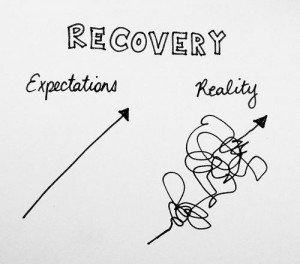
There is no set time requirement for recovery as it is recognized that this is an individualized process whereby each person’s journey of recovery is unique and whereby each person in recovery chooses supports, ranging from clinical treatment to peer services that facilitate recovery.

There is also no set time requirement for deciding it is time to give up an addiction. Take as long as you want to make that decision, but once you have decided, it is time to act. Procrastination is not useful.
Song by Damien Rice

1
Whatever is problematic about our genetics or our pasts, we have arrived at that unpleasant destination: we have a problem and we need to figure out what to do about it.

If we are among that half of the addicted population which cannot stop just by deciding to, we will need help, guidance and education. Traditionally, people have turned towards various and sundry peer-support recovery groups, rehabs or psychotherapy/mental health therapy. This is not a one size fits all situation and people are encouraged to look around and find what works for them. Twelve-step groups have been around a long time, since 1935, and have helped many, but they are not for everyone. Incorporating a belief in a Higher Power is central to the recovery process in AA, but each meeting is different. They are not all necessarily Christian-centric like it’s predecessor, The Oxford Group. The wisdom of the group, as expressed by meeting attendees, is a key part of recovery for AA, and this can be either good or bad, depending on the group. Their strength is that they have name recognition and are ubiquitous. You can find meetings almost anywhere and, depending on your area, usually multiple meetings on every day of the week. Their weakness is that twelve-step is not an evidence-based program and it’s precepts rely, for the most part, on tradition and hearsay guided by the wisdom and scientific understanding which was available in 1935.
The following information is from the New York Times (https://www.nytimes.com/2014/07/06/nyregion/a-different-path-to-fighting-addiction.html) and original studies are sourced:
The Cochrane Library, a health care research group, reviewed four decades of global alcohol treatment studies and concluded, “No experimental studies unequivocally demonstrated the effectiveness of AA or TSF approaches for reducing alcohol dependence or problems.”
From a study involving eight trials which included 3417 people:
Abstract
BACKGROUND:
Alcoholics Anonymous (AA) is an international organization of recovering alcoholics that offers emotional support through self-help groups and a model of abstinence for people recovering from alcohol dependence, using a 12-step approach. Although it is the most common, AA is not the only 12-step intervention available there are other 12-step approaches (labelled Twelve Step Facilitation (TSF)).
OBJECTIVES:
To assess the effectiveness of AA or TSF programmes compared to other psychosocial interventions in reducing alcohol intake, achieving abstinence, maintaining abstinence, improving the quality of life of affected people and their families, and reducing alcohol associated accidents and health problems.
SEARCH STRATEGY:
We searched the Specialized Register of Trials of the Cochrane Group on Drugs and Alcohol, the Cochrane Central Register of Controlled Trials (CENTRAL), MEDLINE from 1966, EMBASE from 1980, CINAHL from 1982, PsychINFO from 1967. Searches were updated in February 2005. We also inspected lists of references for relevant studies.
SELECTION CRITERIA:
Studies involving adults (<18) of both genders with alcohol dependence attending on a voluntary or coerced basis AA or TSF programmes comparing no treatment, other psychological interventions, 12-step variants.
DATA COLLECTION AND ANALYSIS:
One reviewer (MF) assessed studies for inclusion and extracted data using a pre-defined data extraction form. Studies were evaluated for methodological quality and discussed by all reviewers.
MAIN RESULTS:
Eight trials involving 3417 people were included. AA may help patients to accept treatment and keep patients in treatment more than alternative treatments, though the evidence for this is from one small study that combined AA with other interventions and should not be regarded as conclusive. Other studies reported similar retention rates regardless of treatment group. Three studies compared AA combined with other interventions against other treatments and found few differences in the amount of drinks and percentage of drinking days. Severity of addiction and drinking consequence did not seem to be differentially influenced by TSF versus comparison treatment interventions, and no conclusive differences in treatment drop out rates were reported. Included studies did not allow a conclusive assessment of the effect of TSF in promoting complete abstinence.
AUTHORS’ CONCLUSIONS:
No experimental studies unequivocally demonstrated the effectiveness of AA or TSF approaches for reducing alcohol dependence or problems. One large study focused on the prognostic factors associated with interventio
A good rule to go by can be found in the prologue of Project Match: “No single treatment approach is effective for all persons with alcohol problems. A more promising strategy involves assigning patients to alternative treatments based on specific needs and characteristics of patients.” Project Match, which began in 1989, was an eight year study funded by the National Institute on Alcohol Abuse and Alcoholism which compared the effectiveness of different types of recovery methods. Many find the results flawed and one-sided and treatment alternatives have proliferated since that time, but here is an excerpt from the Hazelden report on Project Match.
The three treatment approaches were:
1. Cognitive Behavioral Therapy (CBT), 2. Twelve Step Facilitation (TSF), and 3. Motivational Enhancement Therapy (MET). Study Results—Few “Matches” Found
Outcomes were measured in terms of percent of days abstinent (PDD) and drinks per drinking day (DDD). There were no significant differences across treatment approaches during and after reatment; patients in all treatment groups reported considerable reduction in drinking.
Post treatment Drinking Outcomes Patients in all three treatment groups reported significant reductions in drinking during the one year, post treatment follow-up period. Differences across treatment groups were not significant, although TSF showed a slight advantage.
At three years follow-up, however, a significantly higher abstinence rate was found with TSF clients. Among TSF clients 36% were abstinent, compared with 27% of MET and 24% of CBT clients (p< 0.007).
. . . . .
And Nothing Was Revealed
Unfortunately, Project Match did not look at competing peer support groups. It just compared Twelve Step Facilitation Therapy coupled with 12-Step attendance to Cognitive Behavioral Therapy and Motivational Enhancement Therapy, so all the study really proved was that therapy coupled with peer support groups is better than just therapy by itself. There needs to be many more studies to get a true picture of what works and what doesn’t. In the mean time, I encourage the people I talk with to go with what works for them. Try something for a while and if it’s not working, try something else. The main thing is, once you have decided to end an addiction, don’t give up. It is worth the struggle and once you have succeeded, you will not regret your efforts.
A more balanced and complete look at 12-step effectiveness can be found at the National Institute of Health Public Access site. One of the best studies was the Cochrane Review. Please take a look at their conclusions. Per Wikipedia: Cochrane (or Cochrane Collaboration as they were formally known) is a British non-profit, non-governmental organization formed to organize medical research findings so as to facilitate evidence-based choices about health interventions faced by health professionals, patients, and policy makers.[4][5] Cochrane has more than 37,000 volunteers in more than 130 countries.[3]The group conducts systematic reviews of randomized controlled trials of health-care interventions and diagnostic tests and publishes them in The Cochrane Library. A few reviews, in occupational health for example, incorporate results from non-randomized, observational studies.
The Cochrane Collaboration is pretty much the gold standard in matters of physical and mental health.
If you are considering a for-profit facility, either inpatient or outpatient, make sure they have a good success rate. What that means is they should be able to tell you what percentage of people who enter their program are able to enjoy sustained periods of abstinence. If they are not tracking this information, and most do not, they are not engaging in an evidence-based procedure. They don’t know whether what they are doing is working or not. Some programs may claim graduates who have a good success rate (about a 90% to 95% clean rate over a five year period). However they may have just found a way of putting people through an experience that was so stressful that only the people who were willing to do almost anything to stay clean were able to graduate. Would those people have stayed clean no matter what program they entered? When you looked at people who walked through the door, typically only around 5% of them actually stay clean for five years. Graduates of some programs may have a much higher success rate while the success rate of people who entered the program may be much lower, because many of them either left the program or were forced to leave because they were breaking program rules. These numbers may sound discouraging, but once a person decides to end their addiction, they usually keep trying until they succeed, and if you look at that success rate it is much, much higher. I do believe that one of the good things about either inpatient or outpatient programs is that people go through a really intense, extended period of self-examination, learn about addiction, get a good introduction to peer support groups, and will generally stay clean for the duration of the program. This allows a person’s brain to become somewhat normalized so that they are able to make much better decisions about their futures.
, “A Humanist Alternative to A.A.’s 12 Steps” by B. F. Skinner (Harvard University Scientist) From July/August 1987 Humanist Magazine.
1. We accept the fact that all of our efforts to stop drinking have failed.
2. We believe that we must turn elsewhere for help.
3. We turn to our fellow men and women, particularly those who have struggled with the same problem.
4. We have made a list of the situations in which we are most likely to drink.
5. We ask our friends to help us avoid those situations.
6. We are ready to accept the help they give us.
7. We earnestly hope that they will help.
8. We have made a list of the persons we have harmed and to whom we hope to make amends.
9. We shall do all we can to make amends, in any way which will not cause further harm.
10. We will continue to make such list and revise them as needed.
11. We appreciate what our friends have done and are doing to help us.
12. We, in turn, are ready to help others who may come to us in the same way.
—–
You can’t force anybody else to change, but you can change yourself.


In The Dark
Overly attached, the flashlight of my desire gave me confidence and direction while walking at night in the woods. The torch seemed to reveal a path that I could see before me but it proved to be an illusion, for what I could not see was as much a path as what I could see. I sat down and listened to the insects buzzing around my head whispering thoughts of calmness and acceptance and patience. When daylight came, I found I was surrounded by the world and that in each and every direction I looked was a path, and I knew that each path would lead me from where I was to where I knew not. I realized that my situation was exactly as it was when I traveled in the dark, except now I traveled without fear. It was not desire that had lit my way, it was ignorance.
Led Zeppelin Lyrics
“In The Light”
Just believe and you can’t go wrong.
In the light you will find the road.
I know how it feels ’cause I have slipped through
Baby, I just want to show you what a clear view it is
Now listen to me
Oh, whoa-whoa, as I was and really would be for you, too, honey
As you would for me, oh, I would share your load.
Let me share your load. Ooh, let me share, share your load
In the light you will find the road
When love is pain it can devour you,
I would share your load. I would share your load
Baby, let me, oh, let me In the light
Everybody needs the light.
In the light, in the light, in the light
Light, light, light, in the light, ooh, yeah
Light, light, light, in the light
Copied from their website:
Cherry Hill Detoxification Program Services
Cherry Hill’s Sobering Unit is a 50 bed, co-ed facility, staffed 24 hours a day, 7 days a week, and 365 days a year. Our sobering Unit was specifically designed to assist those needing immediate sobering services for a briefer visit of 23 hours or less. At our sobering Unit we have a central telephone screening process for both detoxification and sobering services. The central telephone screening process is designed to allow trained staff to assess appropriate placement of individuals to sobering or detox services.
Cherry Hill’s Detox Unit is a Social Model 32 bed residential program serving men and women who are withdrawing from the effects of alcohol or drug use. Clients are constantly monitored by trained staff and are referred for medical or psychiatric services as needed. Approximately 50% of Cherry Hill’s clients have co-occurring mental illness. In addition to ensuring the client’s safe withdrawal our staff will work with each client to assess the clients needs and goals. The client is then referred to the appropriate level of treatment and supportive services which may include, housing, medical or psychiatric services, job training, etc. The average stay is from 4 to 6 days.
Cherry Hill Detoxification Services Program is specifically designed to meet the needs of Alameda County Communities, including Law Enforcement, Hospital Emergency Departments, Alcohol and Drug Treatment Programs, Medical/Psychiatric clinics, Community CBO’s and individual community members.
Cherry Hill Detoxification Services Program has a toll free telephone number 1-866-866-7496 and can be called 24 hours a day for assessment to our services, crisis support and telephone referral services.

Other Alameda County services:
Alameda County Network of Care – Listed as being for service members, veterans and their families but almost every place listed will take the general public.
Behavioral Health Care Services (BHCS) – Mental health and substance services
ACCESS Program – Acute Crisis Care and Evaluation for System-wide Services. 1900 Embarcadero, Suite 208, Oakland 94606 Tel: (800) 491-9099, Fax: (510) 346-1083
Asian Community Mental Health – Offers multilingual and multicultural counseling care such as crisis stabilization, individual/family therapy, and substance abuse. 310 8th Street Suite 201 Oakland, CA 94607 Phone: 510-869-7200 asian access line Alt. Phone: 510-451-6729
Dial 211 for access to all county social services —–

To know is not enough. One must do.
Understanding the mechanics of addiction is like becoming familiar with the framing of a house. The frame provides strength and structure and it is what everything is built on. However, you can’t live in it. To have a home to live in, you must retrain your brain. You must build walls and then paint them and fill the home up with pictures, and furnish it with couches, tables, beds, chairs and books so that you will be comfortable there. Making a house a home takes work. Moving on from an addiction is the same. Willpower is useful but it is not enough. We must retrain our brains so that when we feel anxious, angry, hopeless, or any of the other uncomfortable emotions, we will turn to a different, healthier behavior – not the addiction. Many of the tools in SMART Recovery accomplish exactly this goal. They help us to rebuild ourselves and to create an environment where we can be comfortable. A home is a place where one has the opportunity to be happy and to grow and raise a family and evolve. To know is not enough. One must do.
What Happens After You Stop Drinking Alcohol Is Up To You
What Happens After You Stop Drinking Alcohol Is Up To You from Kevin O’Hara.
Your brains have evolved to repeat pleasurable experiences (see The Compass of Pleasure by David Linden and The Biology of Desire: Why Addiction is not a Disease by Marc Lewis). The mechanisms are well understood. A behavior which is interpreted as pleasurable releases dopamine which has the effect of linking the pleasure-producing behavior to the desire to repeat that behavior. The motivational centers of our brains, the nucleus accumbens, the ventral tegmental area and the striatum, among others, create the desire to engage in the behavior again.
The greater the amount of dopamine, the sooner the release of dopamine which follows the behavior and the more often the behavior is linked to the dopamine release all determine the strength of the habit/addiction. Cigarettes are a pretty good example of this pattern. The logical fallacies we tell ourselves in order to continue our addictions are all justifications to continue the addictive behavior after it has already been established. They come after addictions or habits are noticed. They are products of our prefrontal cortex, the logical, problem solving area of our brain, and they serve to reduce the tension which results when there is dissonance between what we do and what we think we SHOULD do.
Here is a list of the fallacies we use to avoid change. It was created to help people quit smoking by Dr. Michael Edelstein, a licensed clinical psychologist in San Francisco, a SMART Recovery facilitator and author of Three Minute Therapy: Change Your Thinking, Change Your Life (1997):
- Circular thinking: If you believe the impulse to smoke is irresistible, you don’t attempt to resist the impulse. Then, having failed, you begin to view failing to exercise control as confirmation that you have no power to quit, thus using your failure as “proof” the impulse is irresistible.
- Self-fulfilling prophesy: Because of the circular thinking above, you may continue to smoke as if you were powerless to quit.
- Illogical conclusion that you’re a special case who can’t quit: People quit regularly. According to the Centers for Disease Control and Prevention, since 2002 the number of former U.S. smokers has exceeded the number of current smokers.
- “I just haven’t gotten around to the effort of quitting.” When you’re doing nothing to quit, you’re not doing nothing! Smoking involves this complex chain of behaviors: determining the type of business carrying cigarettes, locating a store that sells them, mapping out a route to the store, driving or walking to the store, obtaining money to purchase the cigarettes, making the transaction, finding a place to smoke, opening the cigarette pack, removing the cigarette, lighting up, inhaling. Quitting involves doing nothing.
- “I can’t resist them.” Cigarettes cannot force you to smoke: cigarettes are inanimate objects. They have no will or power of their own to force you to smoke. The only irresistible human behaviors do not involve tobacco: blinking, sneezing, convulsing, falling asleep, twitching, and others. Even a starving individual’s strong urge to eat can be resisted. In 1981 Bobby Sands, an IRA hunger-striker, died of self-imposed starvation in prison after choosing to refuse food for 66 days as part of a political protest. Certainly, then, a person experiencing the urge or craving to smoke can resist.
- “I must have the nicotine.” Smoking cigarettes is still a choice even in cases where an individual requires the regular ingestion of nicotine for some reason: It can be obtained from nicotine patches, nicotine gum, nicotine sprays, nicotine inhalers, and e-cigarettes.
If we examine this list of fallacies we will see they come into play after the habits and addictions are already in place. These fallacies must be refuted if we are to change, and executive control must be established, or at least must have a dominant influence for a period of time, if we are to change our addictive behaviors, but I also think that we must retrain the primitive areas of our brains which control those behaviors, so that triggers will lead to new behaviors.
We cannot “think” our way out of addiction, but we can use our thinking to help us change. Using logic to change is a short term solution but the problem is it leads to “ego fatigue. Telling yourself “No!” when trying to end a desired behavior does work for a short period of time but eventually willpower lessens (ego fatigue) and relapses occur. Study after study has proven this. This is the reason people who engage in restrictive diets will, over a long period of time, actually GAIN weight. When compared to people who just change the foods they eat to healthier fare as opposed to limiting intake, it is clear that the latter strategy is statistically doomed to failure. See The Willpower Instinct by Kelly McGonigal. Real change comes when we feel disgust at the thought of the actions which resulted from our addictions and choose, at both a logical and emotional level, to engage in alternative behaviors. This is what I mean when I say that “To know is not enough. One must do.” So now that you’ve read some more eye-opening biological and neurological information about what happens during your phases of urges and then using in your addictions, you probably feel a sense of accomplishment… the great aha moments of learning more!! Maybe you feel like you’re one step closer to recovery from your addiction with this great knowledge! That’s what I’m talking about! “To know” is never enough! Recovery does not impart itself through osmosis in the explanatory books, videos and even from speakers” You must Do!!!! Changing addictive behaviors involves retraining your brain, and this takes time, repetition and work. The next time you feel anxious or sad, your first choice for relief can be an ingrained alternative response of your choosing, NOT the old addiction. You’re painting your home and furnishing it; you are making it worth living in.
How does one start? It starts with a giant commitment! As Eckhart Tolle says, “Every addiction starts with pain and ends with pain!” If you think you kept on smoking, drinking and/or drugging just to relieve a little stress, you probably justified continuing your addiction just to providing relief! Then the relief turns into a love affair! How do we turn our love of an addictive behavior into disgust? My favorite tool is SMART Recovery’s Cost Benefit Analysis (CBA) which is explained here:
https://www.reptiledysfunction.org/why-them/#cba.
How do we build our virtual homes to live in? We develop coping skills to deal with problematic emotions: skills such as exercise, meditation, SMART’s ABC tool, mindfulness, unconditional self acceptance (USA, UOA, and ULA) and by connecting deeply with others and with life. These and many other helpful tools and blogs, as well as online meetings, can be found at https://www.smartrecovery.org . At the end of your days do you want to look back over your life and see only enslavement to an addiction? Do you want to have loved only that which could never love you back? Or do you want to have truly connected with life and others? Your old home has turned to dust and disappeared. Look around and find a place to build your new home . . . . then build it!
Peer Support Groups
A person who is addicted or very new to recovery and is stuck alone inside their own head lives in a dangerous neighborhood. Many of us feel we should be able to solve our own problems and to seek help shows weakness. Seeing that our addictions are causing problems in our lives is fairly easy, but developing stratagems to successfully end the behaviors and to continue our lives in abstinence is much more difficult. Our brains evolved to value short term pleasure over long term satisfaction and fighting this programming can be quite a problem, especially when the tools we bring to the table are the same tools we had when we were slipping into addiction. There is nothing that is more helpful than sitting with a group of people who have been through what we are going through and who have made a commitment to constructively help one another.

When people first come to a peer support group, they think both more highly of themselves than is warranted, and less highly of themselves than is called for.
From The Fix
Blue October, “Hate Me”
After toiling away for over a decade, Houston rock band Blue October finally broke through in 2006 with this angst-y single off their Foiled album. The song starts with an actual answering machine message the mother of lead singer Justin Furstenfeld left her son at the height of his drug addiction
What is needed when people are new to recovery is to help them see who they realistically are and help them accurately assess their situation. Realistic, honest feedback is the key. Cross-talk and feedback are staples at most alternative peer support groups and at the SMART Recovery meetings I facilitate we all help one another in our recovery and in our lives.
Sitting in a ring,
we help one another to
get past and over
From Song Facts
This is a track from Blue October’s seventh studio album, Sway. Frontman Justin Furstenfeld penned the record in an upbeat frame of mind after years of struggling with a crippling alcohol addiction and marital problems. “Sway is about trying to find solutions to problems instead of dwelling in the problems,” Furstenfeld told Radio.com. “It’s about recognizing that you have to be proactive with your life if you really want to make it through to the other side and enjoy it.”

Whatever our bottom was, whatever difficulties brought us to the point where we decided it was time for change, it is important that we remember we are not bad people, we are not immoral, we are not defective. We are just susceptible to addictions.
A few words about the mythology surrounding the word “bottom”. In 12-Step circles there is a belief by many that addicts must hit a bottom before they are ready to stop. This is a strange concept, as we only know what a person’s bottom is after they have stopped. For some people, their bottom is the realization that their drug is no longer giving them what they need and want so they decide to stop. Some people stop and are not aware of having hit any bottom at all. Some people get clean, and feel they understand what their bottom was because they remember something bad happening near the end of their using, only to relapse after a period of time. Everyone then says “Oh, they must not have hit their bottom.” A person who wants to stop using drugs does not have to wait for a “bottom” to appear. They can just decide to stop because they think stopping is the sensible thing to do. As my friend Diane says ” In the end, my opinion is that it is not the “bottom” (which bottom?) that does it……as many people think, it is the work that you strongly commit yourself to do, where maybe something knocks you on you’re ass to get started, then there’s the work to make a plan and a do or die promise to self and to stick to it when tempted, then the work to maintain till it becomes habit and then the work to increase self-awareness to counteract the normal tendency to think one is cured after any length of sobriety.”
We are people with values and hopes who have been living under the extraordinary stress and pressure of active addiction; people who, frequently, have done things we would never do under ordinary conditions. It makes sense to feel bad about some of the things we have done. It is not helpful, however, to feel bad about who we are.

If only
If only the past
If only I could change it
If only I could change the present
I can
We are not what we did, but we are also not yet who we are becoming. We are in transition and our job is to learn from our past and to discover how to transcend it and become the best version of ourselves we can imagine. Whatever interferes with that process is our enemy.
The past is a book
The book has been burned
We foolishly try to divine the smoke’s meaning
The future is a vague cloud
It comes with tea leaves
Ready to be interpreted with great imperfection
The present is jazz
The only way to hear music
Is to play your song
Mistakes are not the problem. They are the past. We can learn from them and become wise. If there is a problem, it is in the now. Look around yourself with as much empathy and understanding as you can muster. A life worth living is lived with all the connection you can fit into it.
.—–
What Works and What Doesn’t
|
||||||||||||||||||||||||||||||||||||||||||||||||||||||||||||||||||||||||||||||||||||||||||||||||||||||||||||||||||||||||||||||||||||||||||||||||||||||||||||||||||||||||||||||||||||||||||||||||||||||||||||||||||||||||||||||||||||||||||||||||||||||||||||||||||||||||||||||||||||||||||||||||||||||||||||||||||||||||||||||||||||||||||||||||||||||||||||||||||||||||||||||||||||||||||||||||||||||||||||||||||||
| Cumulative Evidence Score (CES). For each study, the Methodological Quality Score is multiplied by the Outcome Logic Score (not shown). Then they added up all these scores for a particular modality. So the CES is a function of the number of studies, the scientific rigor of each study, and the outcomes for a treatment within each study. |
| Mean Methodological Quotient Score. This is the average score of the scientific rigor of each study in a particular modality. Scores can range from 0 to 17. |
| Mean Severity of Treatment Population. This reflects the average of how severely dependent the population studied was. Scores range from 1 (less severe alcohol related problems and dependence) to 4 (severe alcohol dependence). |
| % Excellent This is the percent of studies in each treatment category that had high Methodological Quotient Scores (>13 on scale of 1-17). |
| Copyright 2003. Reprinted with permission from Allyn & Bacon.Last revised April 4, 2013. |
November/December 2013 Issue Alternatives to 12-Step Addiction Recovery By Christina Reardon, MSW, LSW Social Work Today Vol. 13 No. 6 P. 12
. . . AA and its various successors are not the only mutual-aid groups available to support people in recovery. For the past few decades, several other groups have tried to offer alternatives to those who want something other than a 12-step approach. These alternative groups historically have struggled to gain a significant following, but with the advent of new technologies and the rise of a new generation of people in treatment who want more control over their recovery, these groups believe the time has come for social workers and other behavioral health professionals to accept them as part of the mainstream continuum of recovery services.
“A big part of what I believe in is choice,” says Robert Stump, executive director of LifeRing, a group based in Oakland, CA. “One shoe does not fit all people. Every day that goes by, there are more and more people who are demanding that choice. [Alternative groups] may not cater to a large section of the American public, but we do appeal to a subset of Americans, and professionals should be aware of that.”
Different Roads to Recovery LifeRing is one of five organizations often cited as the largest national groups that provide an alternative approach to the 12 steps, according to the Substance Abuse and Mental Health Services Administration. The others are SMART Recovery, SOS (Secular Organizations for Sobriety/Save Our Selves), Women for Sobriety, and Moderation Management.
Representatives of these organizations stress that it is not their goal to bash 12-step programs, and they acknowledge that such programs have helped countless people, including many who use the 12 steps to supplement their involvement with alternative organizations.
However, there are several important differences that may make alternative groups attractive to people in recovery who do not want to use a 12-step approach. These differences generally fall into the following four categories:
• Secularity: The 12 steps as originally outlined by AA are overtly spiritual, with references to “a power greater than ourselves,” God, and prayer. Other 12-step groups have retained the same or similar language. The alternative groups, on the other hand, promote themselves as secular in nature. A secular approach makes the groups more open and comfortable not only to atheists and agnostics but also to Buddhists, Muslims, and others who do not share a Western, Christian tradition, Stump says. The alternative groups are not antireligion, however, and many of their members belong to a religious denomination or identify as spiritual.
• Emphasis on internal control: Twelve-step programs emphasize the recovering individual’s powerlessness over alcohol, other substances, or behaviors and the need to rely on a higher power for assistance in overcoming addiction. Alternative groups reject this view and instead see individuals as having adequate power within themselves to overcome addictions. This view is evident in the language of alternative organizations, which emphasize phrases such as “empowering our sober selves,” “saving our selves,” and “self-management and recovery.”
• Evolving approaches: Although the number of 12-step groups has grown over the decades, the basic language and methods of the 12-step approach have not changed significantly since AA’s founding nearly 80 years ago. Alternative groups tend to be more open to changing their techniques in response to the development of evidence-based approaches to addressing addictions, such as cognitive behavioral therapy. The commitment to stay abreast of current research in the field of addictions is one of the main factors that attracted Brett Saarela, LCSW, to get involved in SMART Recovery. “It’s open to change. There’s no dogma about it,” says Saarela, vice president of SMART Recovery’s board of directors. “As new techniques are being produced, they’re evaluated and then incorporated. Nothing is frozen in time.”
• Shedding of lifelong labels: AA and other 12-step groups portray the battle against addiction as a lifelong one that requires constant vigilance and at least periodic attendance at meetings, even for people who have been in recovery for years. Alternative groups take a shorter-term approach, presenting themselves as tools that people in recovery can use until they no longer see the need for them. Women for Sobriety, for example, refuses to give its participants lifelong labels based on past behavior and instead focuses on the present and the future, says Laura Makey, one of the organization’s facilitators and treasurer of its board of directors. “If I quit smoking, I wouldn’t say I was a smoker for the rest of my life,” she says. “We are not defined by our past. The idea of having to label yourself as an alcoholic or an addict for the rest of your life, that is disempowering, especially for women.”
Alternatives to 12-step peer support can be found at About.com
Certain groups have multiple links (SMART Recovery, Rational Recovery, Moderation Management and Women For Sobriety) but one link will take you to an About.com web page which describes the group and the other link will take you directly to the group’s website..
Non-Step Support Groups
Secular Rehab Programs – Secular Non-Religious and Non-Spiritual Alcohol and Drug Rehab Programs
…
SMART Recovery® link to about.com description
Rational Recovery
Moderation Management
Women For Sobriety
Self Help Group Locator
HAMS Harm Reduction Network
24/7 Help Yourself
Biochemical Restoration
Eclectic Recovery
LifeRing Recovery
The 16-Steps for Discovery and Empowerment
ANI DIFRANCO LYRICS
“Getting over a painful experience is much like crossing monkey bars. You have to let go at some point in order to move forward.” -C.S. Lewis
What Worked for Me and What Might Work for You
Disclaimer: We are all different from one another. What follows are just ideas. Find out what works for you and go with it. What works should be your only yardstick, not what I or anyone else tells you. Don’t be afraid to try different things for a while, as stopping an addiction is always uncomfortable, but if after trying them you see no change, then keep looking for what does work.
“If you do what you’ve always done, you’ll get what you’ve always gotten.” -Tony Robbins
Moderation
For people who are fairly new to seeking an abstinent lifestyle, moderation can be very seductive. They are still very attached to their drinking/using behaviors and giving them up completely can seem overwhelming.
From Harvard Health:
Moderation can be used, however, to motivate patients to change.
Many patients are ambivalent about giving up alcohol, even though they recognize that dependence is straining their marriages or jeopardizing their jobs. The sad reality is that alcohol has become so integral to their existence that they can’t imagine what life would be like without it. A patient who expresses a desire to start drinking in a more controlled way is indicating a desire to change a behavior. Motivational interviewing can help patients progress toward change. With this technique, clients set the agenda, and the therapist acts as a partner in dialogue rather than an authority.
Demanding abstinence too soon may just end up driving away a patient who is at the brink of dealing with addiction more directly. When a patient expresses a desire to moderate drinking, it can alert the clinician to a teachable moment. Patients who try to limit drinking for a while and find they are unable to do so may then realize that they have already developed dependence. This may be enough to motivate them to try to abstain.
One of the problems of getting good statistics is that different standards are used by different studies and different people start off in different places. What is success? Lowering your total consumption for the month? Is your quality of life improved? Is your health better? One of the things which has been determined is that the longer you have used and the more you have drunk each day, the harder it is to pull off moderation successfully. Also, it depends on which drugs we are moderating. The more addictive the drug, the harder it is to moderate. If your drinking is a giant problem (its use has destroyed relationships, or you have lost a job or employment because of drinking or using, or you are experiencing health consequences) then moderation is probably not a viable option for you.
From DrugAbust.com:
Of the patients studied, 90 percent of total abstinence patients were still sober two and a half years after treatment. Only 50 percent of those who focused on controlled consumption succeeded in controlling their drinking.
One of the advantages of abstinence is that you have a nice clear line for your desired behavior: no drinking or using. One of the main problems of moderation is that we humans are truly gifted when it comes to giving ourselves permission to enjoy short term pleasures in spite of long term difficulties which a rational decision-maker would say outweighed the fun. I see this every day in my meetings. If you decide to try moderation first, it is highly recommended that you clearly define what your goal is and stick to it. Do not allow creeping incrementalism to infect your judgement. Keep track of using and do not change your idea of what success is. If you can’t moderate, it’s not a tragedy. You tried and it just didn’t work for you. It doesn’t work for most and there is no rule which says you should be the lucky one.
I tried moderation when I was trying to quit heroin. Over a five year period when I was actively trying to control my habit, I struggled to use occasionally enough that I would not become physically dependent, but I was never able to pull it off. That probably makes me a defeatist when it comes to my feelings about moderation for others. Also, I am of the opinion that consuming mind-altering substances is just not worth the risk, trouble, time and potential enslavement which comes along with their use. The opponent process guarantees you cannot come out ahead in the substance use game.
This is my metaphor for moderation, which is so seductive for so many:
The White Whale of Moderation
All that being said, we are each allowed to choose our own life paths and to seek happiness wherever and however we can find it.
Think About Your Decision – You are contemplating making a very big change in your life so I would advise you to spend as much time as you need to make that decision. Don’t think about whether you can quit, think about whether you want to quit. If you decide you would happier without the addiction, then you know your goal and can proceed.
“All great changes are preceded by chaos.” -Deepak Chopra
If you decide you would be happier engaging in the addiction, then by all means, don’t waste your time fumbling around with half-measures. To succeed in ending an addiction, you must be fully committed. If you have decided to quit, don’t second-guess yourself. You have already spent all the time you needed on this issue. Move forward to your goal.
“Twenty years from now you will be more disappointed by the things that you didn’t do than by the ones you did do. So throw off the bowlines. Sail away from the safe harbor. Catch the trade winds in your sails. Explore. Dream. Discover.”
Mark Twain
“Remembering you are going to die is the best way I know to avoid the trap of thinking you have something to lose. You are already naked. There is no reason not to follow your heart.” -Steve Jobs,

This Cost/Benefit Analysis chart will help you to decide:
T Chart_Cost_Benefit_Analysis_1
From the SMART Recovery Handbook to help guide you when you fill out your Cost Benefit Analysis:
Four Questions About My Addiction
1.What do I enjoy about my addiction, what does it do for me (be specific)? List as many things as you can that you liked about whatever you are/were addicted to.
a. Where possible, find alternative ways of achieving the same goals. b. Recognize positive thinking about the addiction as a potential relapse warning sign. c. Realize that there are some things you liked about the addiction you will have to learn to live without. d. List what you enjoy about your addiction so you can ask yourself if it is really worth the price. e. Realize that you aren’t stupid; you did get something from your addiction. It just may not be working on your behalf anymore.
2. What do I hate about my addiction, what does it do to me (give specific examples)? List as many of the bad, undesirable results of your addiction as you can. Here it is extremely important that you use specific examples. Specific examples have much greater emotional impact and motivational force!
a. Ask yourself honestly “If my addiction was a used car, would I pay this much for it?” b. Review this list often, especially if you are having a lot of positive, happy thoughts about all the great things your addiction did for you.
3. What do I think I will like about giving up my addiction? List what good things you think/fantasize will happen when you stop your addiction.
a. This provides you with a list of goals to achieve and things to look forward to as a result of your new addiction free lifestyle. b. This list also helps you to reality test your expectations. If they are unrealistic, they can lead to a disappointment based relapse.
4. What do I think I won’t like about giving up my addiction? List what you think you are going to hate, dread or merely dislike about living without your addiction.
a.This list tells you what kinds of new coping skills, behaviors and lifestyle changes you need to develop in order to stay addiction free. b. It also serves as another relapse warning list. If all you think about is how much life sucks now that you are not doing your addiction, you are in a relapse thought pattern that is just as dangerous as only focusing on what you liked about your addiction.
This is not a do once and forget about it exercise. It is an ongoing project. Most people simply can’t remember all of the positive and negative aspects of addiction and recovery at any one time.
Furthermore, seeing all the negative consequences of addiction listed in one place is very powerful. On the positive side, no one really knows what they like or don’t like about living free of their addiction until they have done so for some time. I know of people who continued to add items to all four questions for a full 6 months.
Again, the preceding was from the SMART Recovery Handbook
Do not do this exercise in your head. Print copies and write it out longhand. The idea is not just to convince your reasoning mind, but to interact with those primitive areas of your brain like the reward and pleasure centers which value short-term cravings over long term benefits. Use this chart at least once every day while you are making your decision and for the first few months after you terminate your addiction, as it will help maintain your motivation. After each entry in the chart write an “L” or an “S” to designate the entry as a long term or short term cost or benefit. For instance, physical pleasure might be a benefit of your addiction but you only feel the pleasure while you are high, so you would put an “S” next to the entry. Incarceration might be a risk or cost on the chart but that is something which could go on for an extended period of time, so you would put an “L” next to it. As you fill out the chart you will notice that most of the benefits are short-term and fleeting while the costs are mostly long-term and lasting.
Part of your calculation of whether you want to cease the addictive behavior is an honest evaluation of the feasibility of continuing it. Most addictions escalate: that is, in order to get the same satisfaction from the substance or behavior you have to do more of it over time. Stronger alcohol, more frequent drinking, larger amounts consumed within a given period of time. If you suffer from a gambling addiction, most people make bigger and riskier bets as time goes on in order to sustain that rush they feel. Can this continue forever? Are there health risks to what you are doing? Can you continue the behavior indefinitely without consequences? Can you afford the financial damage? If you decide at some point the addiction is not sustainable, then use that knowledge as part of your calculation.
“The best thing you can do is the right thing; the next best thing you can do is the wrong thing; the worst thing you can do is nothing.” -Theodore Roosevelt
Do you find it hard to get motivated? Please look at these charts (click for larger view):
Your life does not get better by chance, it gets better by change.” –Jim Rohn
Actual Causes of Preventable Deaths in the United
Top Ten States for Drug Overdose Deaths
Rateof Drug Overdose Deaths in the United States 1970-2006
U.S. Drug Overdoses by Drug
Economic Costs of Drug Use
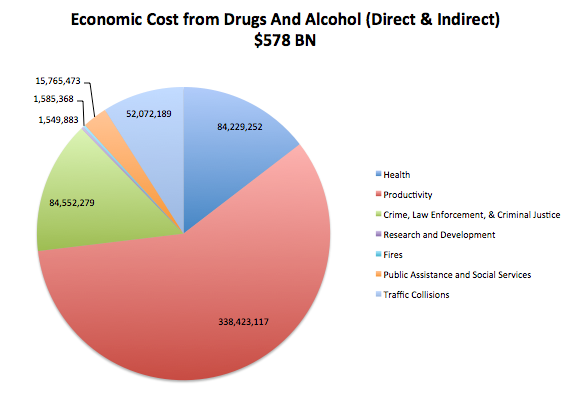
U.S. Drug Deaths Including Tobacco
Your life does not get better by chance, it gets better by change.” –Jim Rohn
photos of the life by Justin Maxon

“You must do the thing you think you cannot do.” – Eleanor Roosevelt
Once You’ve Decided to Quit – Ask yourself, God, or whomever or whatever you believe could possibly affect your destiny and/or future, for the willingness to quit and pick a date when you will actually stop the addictive behavior. I asked myself for the willingness to say goodbye to my addiction and the motivation to stop on August 16, 1989. Set your agenda and give yourself a specific goal. Once you end your addiction, concentrate your efforts more on learning how to live your new life and how to transition to it, and less on stopping your old.
When you truly understand that it’s not only about what you’re running from, but even more about what you’re running to, you will be well on your way.
There is a website called BecomeAnEx.org which focuses on ending a smoking addiction but it’s strategies would be useful for ending any addiction. After you have gone through any physical withdrawal, it’s a good time to stay busy. Withdrawal from alcohol, benzos, and some other drugs can be physically dangerous and should only be attempted after consulting a doctor, preferably an addictionologist. It is helpful to let those in your life know what you are attempting to do and enlist their aid as much as possible. You will have to use your own judgement about this. For example, if telling your employer what’s going on would result in your losing or negatively affecting your job, then you may have to keep this a secret from your workplace. If your addiction has been disruptive enough in your life, then you should understand that finally ending it is really the most important thing going on at this moment. Expect a little less of yourself in the next bit of time. Stopping a major addiction can be a full time job. Write down a plan for changing your behavior. Be as concrete and specific as possible. Finally, find a peer support group that you trust and is a good fit to your world view and makes sense to you. You have been living your life with only your own insights and motivation and sometimes it can be helpful to hear the insights of others and get a little motivation from those who happen to live outside your own head. After the symptoms of withdrawal have begun to lessen, find activities which will help you stay clean: exercise, eat healthy food, socialize, read,. Learn as much as you can about addiction and how it affects people. If almost everyone you know is involved in your old addiction, find ways to meet new people. Meetup groups are ideal for this. If you are involved with a person who is also addicted you will face special challenges. Although sometimes couples can help one another give up their addictions, sabotage is a much more common experience. If it becomes apparent you are sharing weakness with each other rather than strength you may be forced to either give up the relationship or at the very least detach for a period of time.
A Great Big World & Christina Aguilera – Say Something
Writer(s): Ian Axel, Chad Vaccarino
Copyright: Ian Axel Music, Chad Vaccarino Publishing.
If you succeed in becoming addiction-free, it is possible your partner will find strength in your success and decide quitting is worth the effort. Without recovery, no real caring relationship is even possible. The addiction will always become the most important thing in your lives. But, you already know this, don’t you?

If You Decide to Stop But Fail on the First Attempt – It’s OK if you decide to stop and then give up right away. Initial failures are more common than initial successes. When you decide to give up an addiction it’s pretty terrifying. Just be calm and realize that if you didn’t stop today you will stop tomorrow or the day after. If you didn’t stop this hour, you will stop two hours from now.
“Even if you stumble, you’re still moving forward.”
“The only time you mustn’t fail is the last time you try.” – Charles Kettering

Hopelessness and self-loathing are your enemy. When the moment comes and you feel ready, embrace it.
“You’re braver than you believe, and stronger than you seem, and smarter than you think.” –A.A. Milne
Don’t be tempted by laziness or inertia or habit to ignore that moment, for when it passes a great opportunity will have slipped through your fingers. If you have exercised regularly or played a sport every day, you know that there are some days when things just don’t go well: you struggle with endurance or you are less strong or less coordinated than other days. This is a normal part of physical activity. The willingness to give up an addiction is much the same. Once you have decided to stop, you just need to have confidence that you can implement that decision.

There will come a moment when it will feel right to you and you can just set this burden down. You will still need determination and there will be times during that first day, and the day after, and the week after, when you will be tempted to revert back to that old behavior, but you will know that it is possible to say “no” to that temptation.
You might relapse, but you will know that you have the strength to stop again. At this point in your life, you don’t have room for discouragement or low self-esteem. You have found the strength to take control of your life, you know you can do this, and you know that all you have to do is put one foot in front of the other, move forward, and not give in to short-term temptations.
Either your life and your world will control you or you will control your world and your life. You can be the driver or you can be the car.

It is time to feed the dog and starve the wolf. Life is too short to allow yourself to be a cork on the ocean, bobbing with every wave and at the mercy of every current. It’s time to swim if you are to save your life. It’s time to become the person you know you can be. It’s time to become who you are. You owe this to yourself and to the people who love you.
A search on Google turned up these suggestions:
Seven Steps to Breaking Your Addiction
Urges – Urges are a natural part of the process of ending an addiction. The parts of your brain where the addiction holds sway are the primitive and basic areas which control the reward systems (utilizing dopamine release as the prize), memory, conditioning, and smell, among others. All that ancient circuitry provides the hunger and drive and desire that motivates us and gets us off our butts to move towards the lessening of need. Unfortunately, we have trained our brains to seek the satisfaction of feeding an addiction. Our rational brains have had the tasks of deciding which desires are safe to satisfy and what is the best, most efficient way to achieve that satisfaction, but the more intense that desire is, the more likely we are to ignore safety concerns and everything else in order feed that hunger. When we decide to starve an addiction so we can gain some control of our lives again, those areas of our brains become very active and send neural messages to our consciousness of need. They access, and make us aware of, memories of the pleasure we used to feel when feeding the addiction. Memories are tricky: the brain has a tendency to forget intense pain, as any woman who has experienced childbirth can testify. One of the brain’s functions is to lessen the amount of pain we feel and increase the amount of pleasure we experience, and that applies to our memories also. The primitive part of the brain ignores or minimizes the pain our addictions have caused and accesses those memories, created during the first years of our addictions, which are pleasurable. For those of us who are seeking to quit an addiction, those days are gone forever and we cannot recapture them, but the primitive brain is on automatic and does not think rationally. It just knows it is hungry.
When you think about using, think of the pain your addiction bought into your life. Think of Sinead O’Conner’s song “You Cause As Much Sorrow”:
—–
A little about memory from Scientific American:
5 Ways to Meddle with Memory
1. Psychologists at Northwestern University showed that each time you recall an event, your brain alters the memory by integrating new information—perhaps drawing on your current mood, activity or location, among other things.
2. The moment of recall can also impair a memory, according to work at Iowa State University. Study participants watched an episode of the television show 24, in which a terrorist used a needle during an attack. Some subjects were quizzed on the plot before they all listened to a recap that incorrectly said the weapon was a stun gun. Only the people who recalled a needle during the quiz had trouble remembering the weapon later.
3. Neuroscientists at the Massachusetts Institute of Technology implanted false memories in mice. The rodents first learned that one chamber was safe but that another was not—in it, they received an electric shock. When the mice later occupied the unsafe chamber, the scientists activated the memory of the safe room using an optical probe. The next day, when the rodents again entered the safe chamber, they froze in place—a sign of fear—even though they had never been shocked there.
4. A recent study at Emory University showed it might be possible to inherit memories from our parents and perhaps even our grandparents. Researchers trained mice to shudder in fear in response to a specific smell. The children and grandchildren of these mice displayed the same reaction to the odor, despite having never come across it before.
5. A jolt of caffeine, equivalent to about 12 ounces of coffee, made study subjects at Johns Hopkins University more likely to recall information they had just learned—but the effect may work only on people who do not drink caffeine regularly.
Cravings – After you quit, there will be times when the urge to use will come back to you, sometimes quite strongly. This is the number one cause of relapse. Keep in mind that urges will come but they also will pass and they do not last for ever.
Use this technique to diminish craving:
Here are some tips:
From: Doc Steinberger
Date: Thursday, November 11, 2010, 5:50 PM
The ACT approach to Withdrawal, Cravings and Recovery Adapted by Henry Steinberger, Ph.D.
Adapted with permission from the article, ‘An ACT Approach to Grief’ by Russ Harris, author of ‘The Happiness Trap’ www.thehappinesstrap.com.
1. Accept what you are feeling. You may feel anything from pain to guilt to sorrow to anger to anxiety and fear, to despair and hopelessness.
Of course you may also feel relief – for this can be the end of a period of extreme suffering for you and those you love. Whatever these feelings are: try to notice them, name them, breathe into them, and make room for them.
2. Accept that at times you will feel overwhelmed. In the early stages of recovery, painful feelings often seem like a tidal wave; they rise up and bowl you over and carry you away. Often this will happen before you are aware of it. And that’s okay. There’s a time and a place for just allowing this to happen; to let yourself be engulfed by the wave of feelings, without avoiding it and without doing anything to stop it. The good thing is, that wave will never actually drown you – even though it feels like it will. And you can always take the observer perspective: i.e. ‘take a step back’ and observe yourself feeling overwhelmed. This will let you ‘see’ that the waves may knock you around but they cannot really harm you.

3. Learn to anchor yourself. Over time, the waves start to reduce in size. They’re still big, but they’re no longer tidal waves. Sometimes they’ll knock you over. Sometimes they won’t. To anchor yourself when these waves hit, you can practice a very broad focus mindfulness exercise: Notice where you are and what you’re doing; notice what you can see, hear, and touch; notice what you are feeling and see if you can name it. Instead of following your habitual urges, maintain a broad awareness of your surroundings, your actions, and your feelings simultaneously – and this will usually keep you grounded, until the wave subsides.
4. Connect with your values. What do these feelings tell you about what is important to you? What do they reveal to you about your own heart?
5. Develop self-compassion. Be kind to yourself. If someone you loved was suffering, what sort of kind, loving things would you say and do for them? Try talking to yourself and caring for yourself in this manner.
6. Be on the alert for unhelpful stories. Common ones include: The ‘My life is over’ story; the ‘I’ll never get over this’ story; the ‘I can’t bear it’ story; and the ‘It’s my fault’ story. Also watch out for the ‘Should have done this/ shouldn’t have done that’ story, which can easily grow to epic proportions. Other lifeless stories include anything that begins with the words ‘If only’ and anything that contains the word ‘unfair’. (It’s true that life is unfair, but there’s no vitality in buying into that story). At times these stories will hook you and reel you in; you can’t avoid that. But once you realize it, you can unhook yourself. How? Name the stories, thank your mind, and let them go.
7. Find vitality within your discomfort. Your discomfort tells you two very important things: a) you’re still alive, and b) you are on your way to recovery. Tune into your caring heart, connect with your values and carry on with your life, doing the things that are important. And take your discomfort with you, carrying it gently and carefully, as if it were a child in your arms.
8. Remember the ancient saying, “This too shall pass.” Remind yourself of this, when the waves are pounding against you. Over time, the waves will get smaller and the intervals between them will grow longer (although be aware that even years later, tidal waves can suddenly appear, taking you by surprise.)
9. Take it easy; rest up; take the pressure off. Recovery consumes energy so you’ll often need to cut back on what you do, for a while. But that doesn’t mean giving up on life. Keep acting on your values – but scale down the effort so you look after yourself adequately.
10. Acknowledging what you have given up or lost, but also appreciate what you still have and could gain.
11. Consider how you can grow from this experience. What might you learn about forgiveness, compassion, letting go and acceptance? How might your own experience benefit others that you care about? Do you notice your heart opening towards others? Kelly Wilson, one of ACT’s founders and an expert in addictions, talks about how your own suffering in life enables you to develop an ’emotional stethoscope’ – with which you can clearly listen in to the pain in others’ hearts.
12. In some situations a ritual may prove useful. Make a time and place in which to feel your pain fully: to open up, and embrace it, and let it be.
This can be a mutual support meeting like SMART Recovery or AA, a smoke lodge ceremony, an acupuncture treatment, a meditation or prayer time or gathering. Whatever makes sense to you.
Doc Henry S.
Adviser and Grand PooBah to SMART Recovery For official information about SMART Recovery go to:
—–
With cravings, you either walk towards them or away from them.
Another method of handling cravings is suggested from the excellent site http://www.overcomingcravings.com/, Cravings usually arise from several triggers such as the smells of things, or the sight of something which reminds you of the addiction or sometimes we can experience cravings because of strong emotions, especially negative emotions which we would just as soon not experience.
As addictions develop we start associating many of the things which surround us with the addictive substance or behavior. While we are using substances or engaging in those behaviors the settings we are in become ques that notify our brains that we are about to engage in the addiction. Those feelings of anticipation and excitement we all feel at such times are the cumulative result of all the dopamine spritzes our brains have experienced each time we engaged in the behavior. It is dopamine which makes us want to engage in the addiction. This is a separate experience from any pleasure we may (or may not) feel while engaging in the addiction itself.
People addicted to alcohol can be triggered by the smell of alcohol or the sight of a shot glass or the sounds of people in a tavern or the sight of a bar. People addicted to gambling can be triggered by slot machine lights or even the sight of green felt, which reminds them of card tables. People who use their addictions to deaden emotional pain can experience cravings when they feel anxious or depressed.
Determine what all your triggers are and confront them one at a time. The first thing you need to do is to realize that each trigger presents you with the opportunity to extinguish it. When you encounter a trigger and do not reward it (that is, you don’t use) you weaken the trigger. Triggering behaviors which are not rewarded lead to dissociation and extinguishment, and that is your goal.
Now that you can see the trigger as an opportunity, you can use deep, slow breathing as a tool of relaxing your mind and body when confronted by that trigger. Just breathe mindfully through the next bit of time while focusing on the trigger. Each time you breathe out, your body relaxes, and with each relaxation you feel, you will tell yourself the craving is lessening and dissolving. If you are incorporating mindfulness meditation or any other type of meditation into your recovery, (which I highly recommend) this will turn into a very powerful tool.
The more you meditate the stronger its affect. After several breaths you will find that the triggers power has lessened. Usually after four or five sessions like this the trigger will have little to no power. When you have countered each element of the craving in this fashion, most people find that they have for the most part conquered their craving. Go to the site overcoming cravings for a more detailed explanation. I have recommended it to the people who currently attend my meetings.
—–
From the World of Psychology
5 Tips for Managing Triggers during Addiction Recovery
By KATE GREEN
Completing treatment for substance abuse or alcohol addiction is a major accomplishment. But the real work starts when you walk out the door. You are now making a commitment to abstinence from drugs and alcohol every single day.
You will encounter cravings for your drug of choice, and for any escape, an opportunity to numb out, and perhaps, sometimes, an overall desire to not feel what you are feeling.
You will encounter triggers in the form of events, people, and subsequent emotions that will make you want to drink or get high again. What can you do in these situations?
Here are 5 tips for managing triggers during recovery from addiction:
-
- Identify your personal triggers.Everyone is different, so every recovering addict’s set of triggers will be different as well. Some common triggers are walking by a bar, seeing someone who is drunk or high, getting paid, the end of a grueling workday or -week, getting into an argument with someone, and being bored.
- Know what you are working with.Triggers and cravings are a very real part of recovery. Do not try to fool yourself into thinking that they will not happen to you. Instead, know your triggers, stay open to anything that may surprise you, and have a plan for when you feel yourself being triggered.
- Practice your trigger plan.Role play, even just with yourself in the mirror, what you will do when you feel like using again. You may save yourself from a rough day, a temporary lapse, or a full relapse back to substance abuse.
- Take care of yourself.You can handle triggers more easily when you are eating and sleeping well, exercising, and remaining aware of your emotions. You are probably familiar with H.A.L.T.: Hungry, Angry, Lonely, Tired. These four things are said to cause more lapses and relapses.When you are taking care of yourself you can identify when you feel any of the four, and that is when you can take action. Taking action, but not reacting, puts you back into the driver’s seat. The trigger may be emotionally affecting you, but you will not act on it. If you are hungry, you will eat. Tired? Take a nap or at least rest your eyes or meditate. Lonely and angry can be a little harder to manage, but phone a friend (or your sponsor) and talk it out.
- Do not test yourself. If you know that walking by a bar is a definite trigger for you, for example, then do not knowingly walk by a bar to see if your recovery is as strong as you believe it to be. Maybe that time you are able to avoid going into the bar. But the seed of a trigger is planted. Something else you have not identified yet as a trigger can occur, and the combination can lead you right to a drink. There is no need to test yourself. When you identify your current triggers, are aware of what you are working with, practice a plan, and employ good self-care, you are managing your triggers during recovery from addiction.
People talk about caterpillars becoming butterflies as though they just go into a cocoon, slap on wings, and are good to go. Caterpillars have to dissolve into a disgusting pile of goo to become butterflies. So if you’re a mess wrapped up in blankets right now, keep going.
From a great article on addiction from the Harvard Health Publications (Harvard Medical School) which I found on Helpguide.org:
Recovery is possible
It is not enough to “just say no”—as the 1980s slogan suggested. Instead, you can protect (and heal) yourself from addiction by saying “yes” to other things. Cultivate diverse interests that provide meaning to your life. Understand that your problems usually are transient, and perhaps most importantly, acknowledge that life is not always supposed to be pleasurable.
Stolen from IFLScience
“Snowflakes are often said to be completely unique; every fluffy flurry that has fallen to the ground does not have an identical companion. . . . As tiny cold water droplets get carried up into the atmosphere, they meet microscopic particles in the air (such as pollen or dust) and begin to freeze into an ice crystal. . . . The exact shape of the snowflake is a product of temperature, humidity, amount of water, and the size of the pollen or dust particle. Snowflakes that look like thin hexagonal needles occur in colder air while the most intricate shapes and plates occur when it is slightly warmer and slightly more humid. As the air can change depending on location and elevation, the snowflake’s shape can be influenced in many different ways before it finally comes to rest on the ground.”
So it is with your recovery. The reasons we became addicted are individual to us. No two of us start out exactly the same. When our recoveries form they are shaped by myriad experiences, some shared, some not, but when those recoveries take shape, they are invariably beautiful.
Take You Home
It’s been a long road through all kinds of stormy weather
The kind you don’t know how you’ll last another day
Black and blue, bruised, and sore.
You fought the good fight
Couldn’t ask for more.
Hanging on by tiny little threads
Feels like the landslide never ends
You can see through the darkness
Cause I’ll bring the sun.
You can fall all the way,
Cause you’ve already won.
Come with me I’ll take you home.
Let it go, let it go, let it go, let it go
let it go, let it go,
I’ll take you home.
You don’t have to have the answers,
Cause in time they’ll be clear,
Just let life be kind and all will heal.
Come with me I’ll take you home.
Let it go, let it go, let it go, let it go
Let it go, let it go,
I’ll take you home.
You can see through the darkness
Cause I’ll bring the sun.
You can fall all the way
Cause you’ve already won.
Come with me I’ll take you home.
(Come with me I’ll take you)
(Come with me I’ll take you)
I know you’ve got a lot to say
And some choices to make.
You don’t have to do it now
You’ll rise like a star,
And be loved for who you are
And believe once again
Let it go, let it go, let it go, let it go
Let it go, let it go
I’ll take you home
It’s a strange and crazy world
And it feels so dramatic
But right along the edge
Is where you find all the magic.
Come with me I’ll take you home.
I’ll take you home.
snowtime from Иванов Вячеслав on Vimeo.



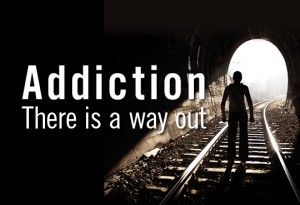
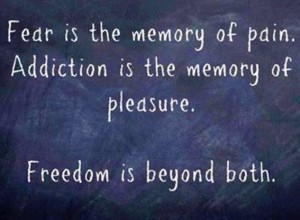
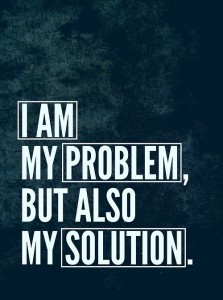
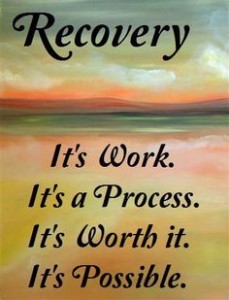

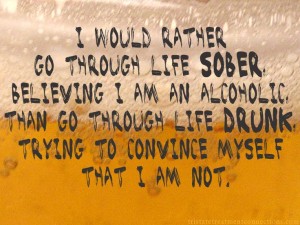
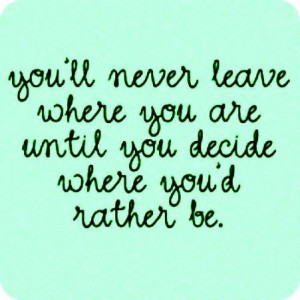

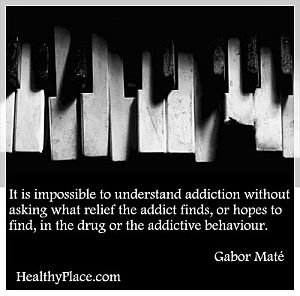
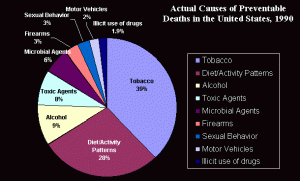
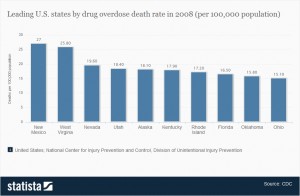
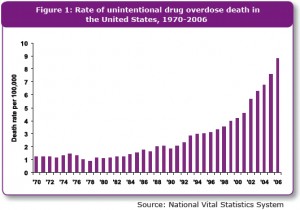
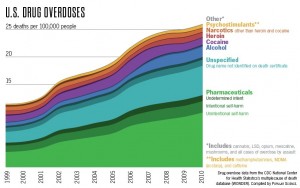
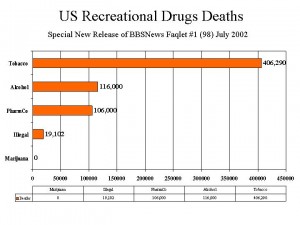
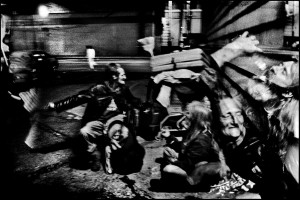
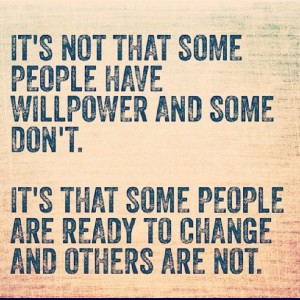
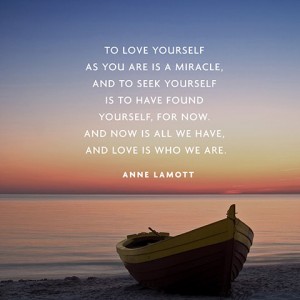
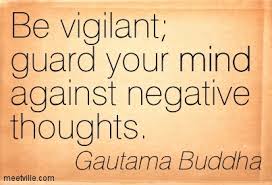
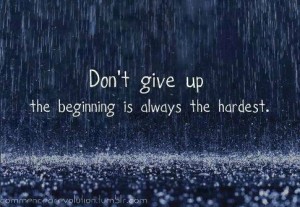
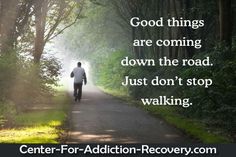
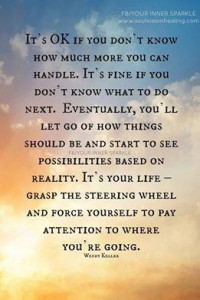
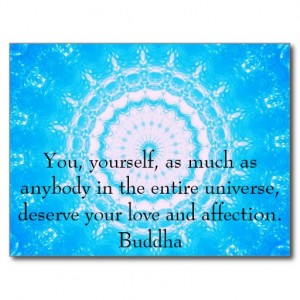
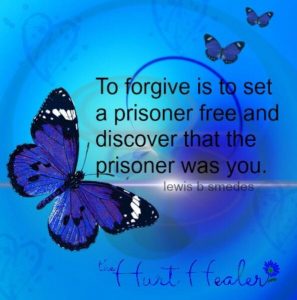
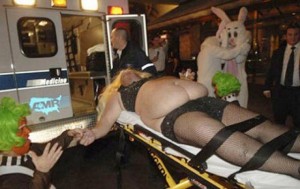 111
111